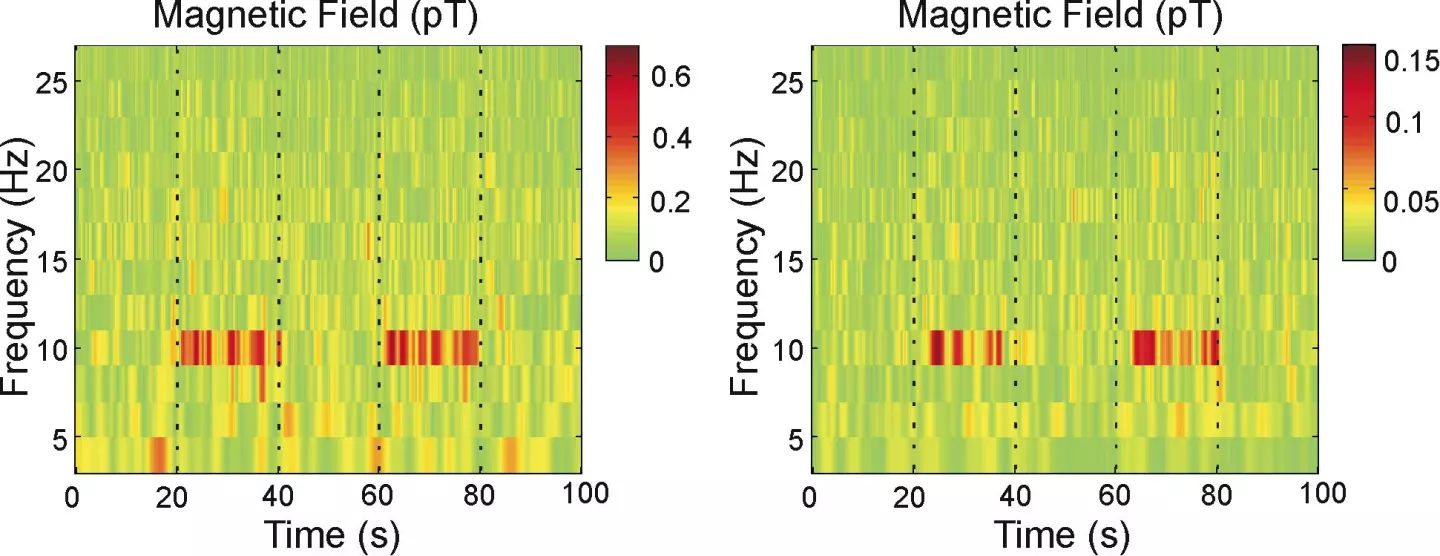Two years ago, researchers at the National Institute of Standards and Technology (NIST) in the U.S. developed a tiny magnetic sensor that could detect the human heartbeat without touching the subject's skin. Now, the same team has improved the sensitivity of the device tenfold, making it capable of measuring human brain activity and becoming almost as sensitive - but much cheaper and easier to operate - than the best magnetometers available today.
Magnetoencephalography (MEG) is a noninvasive procedure that measures the magnetic fields generated by the brain. This helps neuroscientists understand perceptual and cognitive processes, map cerebral activity to help identify tumors in preparation for surgery, or even create better brain-computer interfaces.

Today, the gold standard in MEG technology are superconducting quantum interference devices (SQUIDs). But while extremely sensitive and effective, this technology isn't easy on the wallet. "Cooling to 4 degrees above absolute zero, which is required for current commercial SQUID-based systems, is very expensive and systems typically cost over US$1M," Dr. John Kitching told Gizmag.
This is where NIST's magnetometer comes in. By improving on their previous design, the researchers came up with a magnetic sensor the size of a sugar cube that is also cheaper to manufacture and can work at room temperature.
"Our sensors can be fabricated in parallel with techniques usually adopted for microelectronics," says Kitching. "Moreover, while SQUID-based imaging systems require a large magnetically-shielded room to operate, an imaging system based on our sensors could probably be operating in a much smaller (person-sized) shielded enclosure. These advantages will almost certainly make a potential imaging system less expensive to manufacture."

The device contains 100 billion rubidium atoms packaged with micro-optics. The light from a low-power infrared laser interacts with the atoms and is transmitted through the fiber-optic cable to register the magnetic field strength. While the performance isn't quite the same as SQUIDs, it is a close match, and the researchers are confident that it will only be a matter of time before they can fill the gap - they say they will do so mainly by boosting the amount of light detected.
Currently, to perform a magnetoencephalography, an array of over 306 SQUID sensors is mounted in heavy helmet-shaped flasks containing cryogenic coolants. But the peculiar characteristics of the newly developed sensor might enable lightweight and flexible MEG helmets that contain much fewer sensors. "We are targeting 32 sensors for our system right now," says Kitching.
The NIST sensor was used to measure alpha waves in the brain associated with a person opening and closing their eyes as well as signals resulting from stimulation of the hand; the measurements were then verified by comparing them with signals recorded by a SQUID. The sensor measured magnetic signals of about 1 picotesla (trillionth of a tesla), which is 50 million times weaker than the Earth's magnetic field.

"By making an inexpensive system you could have one in every hospital to test for traumatic brain injuries and one for every football team," says Svenja Knappe, who was part of the research team.
The new device is described in a paper published on the journal Biomedical Optics Express and freely available to the public.
Source: NIST






